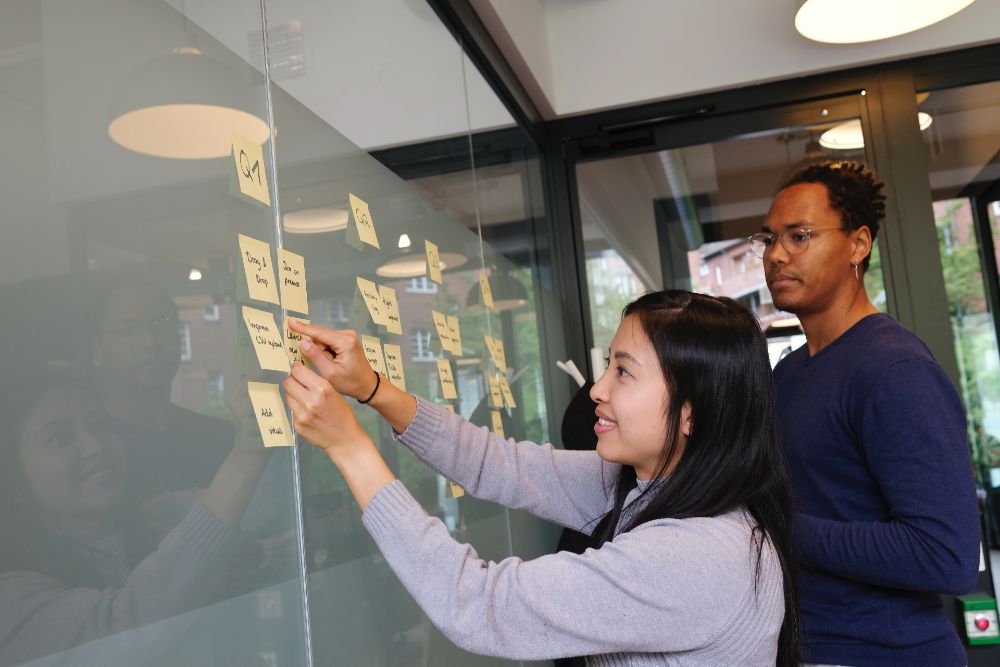As a marketer, you likely wear many hats and are always juggle multiple projects at once. While it’s impossible to be a master of everything, having a basic understanding of project management can help make your life a lot easier.
In this blog post, we’ll cover the basics of project management for beginners. We’ll discuss what project management is, the different phases of a project, and some tips on how to get started. By the end of this post, you should have a better understanding of how to manage your projects and ensure they are successful.
Define your project’s goals, scope, and timeline
When setting up a project, it is important to clearly define the goals and scope of the project as well as an appropriate timeline for completion. By setting these expectations, project leaders are able to prioritize tasks, create deliverables and develop strategies for efficiently achieving the desired outcome within the agreed-upon timeline. Establishing project goals upfront also helps to ensure all parties involved remain on track and can adjust along the way should any changes or unexpected delay agreements arise. Taking the time to properly define your project’s goals, scope, and timeline upfront will lead to overall success and help achieve the desired end result on schedule.
Assemble your team and assign roles
When assembling any project or endeavor, it is essential to assemble your team and assign roles. Gathering the right individuals for your team should include careful evaluations of each persons skillsets and abilities. These individual traits can be used to assign them to roles which will allow them to use their unique talents best. Assigning roles should also take into account any relationships and any preexisting dynamics among the members in order to foster creative collaboration and maximize the group’s synergy. Without a well-constructed team, successful completion of a project is nearly impossible.
Create a project schedule and track milestones

If you want to execute your project according to plan, creating a project schedule and tracking milestones is essential for success. To set up the project schedule, first identify the objectives of the project, then divide it into manageable tasks. For example, you can break down a website development project into components such as content crafting, design work and coding. By dividing the project into smaller tasks, it becomes easier to track progresses and deadlines. Furthermore, don’t forget to create a timeline for each task and assign respective team members that can help in completing tasks effectively and on time. Good communication among team members is critical in making sure all tasks are completed with accuracy and expectations are met. Lastly, check the progress regularly using various methods such as Gantt charts which can be used to easily view what has been accomplished and what needs to be done by when. By creating an organized project schedule prior to beginning your work, it not only helps ensure that you meet goals but also reduces stress levels along the way!
Manage risks and issues throughout the project
Managing risks and issues during a project is essential to ensure timely completion. Understanding the potential risks and issues in advance can help determine appropriate preventive actions, as well as ensure that adequate resources are available should something arise. It’s important for the project team to assess their environment regularly and take immediate action when necessary to mitigate risk and resolve issues quickly. By putting proactive risk management processes in place throughout the project, it will be easier for teams to identify and respond to problems, which reduces cost and timeline implications in the long run.
Communicate regularly with your team and stakeholders
Regular communication with team members and stakeholders is essential for the success of any project. Keeping everyone informed about progress, expectations, issues, and solutions creates an open environment where team members feel comfortable discussing ideas and progress. To ensure high levels of efficiency, it’s important to maintain strong lines of communication throughout the duration of any project. Doing so will not only help make sure that requirements are met efficiently but also allow everyone to stay informed on the project’s status and be more prepared for addressing potential issues or changes in plans. Regular communication between the different parties involved can make all the difference in project completion time and its overall success.
Following these simple tips will help you manage any project, big or small, from start to finish. Defining your goals, assembling a strong team, and staying on top of risks and issues are all crucial to ensuring your project’s success. And don’t forget to celebrate once it’s done!
